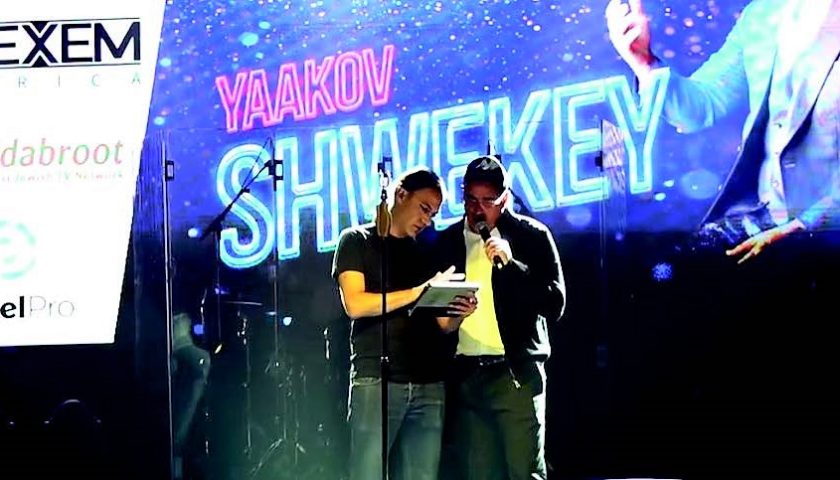Arriving At An Answer To The Question: Why?
By: Dovid Samuels
One of the most powerful and famous events in Jewish history has to be the grand finale of the exodus from Egypt. After 10 terrifying plagues that broke a nation, the fury of their hatred led the Egyptians to wage one final attack against us. The battleground was perhaps the most perilous for the Jewish people; deep waters in front of us, desert and beasts to our sides, and a raging army striding towards us with unbridled animosity. With nowhere to turn other than upwards to our Father in Heaven, the impossible was done for us. The sea split, but in such a wondrous way that even the Sages of the Mishnah debated how many miracles actually took place. One opinion even suggests that 250 miracles were performed at the splitting of the sea – krias Yam Suf – truly making it a miracle of miracles.
But what is perhaps less known is that a similar miracle happened for us a short while later. In the book of Numbers, the Torah very cryptically hints to an event that was so important that it is compared to that great spectacle, krias Yam Suf. The verse says, “Therefore it is said in the book of the wars of Hashem: The gift of the Sea of Reeds and the rivers of Arnon; the outpouring of the rivers…” But what exactly happened at the rivers of Arnon that could make it comparable to the splitting of the Sea? We are taught that on the path the Jews were taking through the desert was a broad valley wedged between two steep cliffs. On the one cliff was a series of small caves and hollows and on the other cliff there were rocks jutting out like sideways stalagmites. The plan was obvious; the Amonite warriors would scale along the side of the cliff and hide inside the caves, waiting for the Jews to pass through the valley down below. They would roll big stones down onto the unsuspecting Jewish families, killing everyone. The perfect ambush.
But Hashem had other plans. He performed a miracle and, before the Jews had even reached the area of the valley, He drove the two cliffs together so that the projections on the one cliff wedged into the caverns on the other side, leaving the Amonites, literally, between a rock and a hard place, squashing all of them to death. When the Jews arrived at that place, rather than the tranquil valley that was there before, they were met with a steep incline. As they ascended the hill, Hashem chose to show His people the danger they had avoided, and what He had done for them. The verse speaks about “the outpouring of rivers”; Hashem made a well spring up with tributaries reaching all of the spaces where the warriors were crushed. The river lifted up the bodies of the dead Amonites to where the Jews were walking and a spring washed their blood and remains up for everyone to see. Suddenly we were shown what danger had awaited us, and how Hashem had, again, miraculously saved us, just like He had saved us at krias Yam Suf.
Perhaps, however, we can take this comparison to krias Yam Suf a little further. Let’s imagine for a second how the Jews must have felt before the spring brought all their enemies up from the ground at the Rivers of Arnon. A smooth journey through the desert suddenly became an arduous and backbreaking ascent up a hostile incline. Their children would have to be carried; their bodies and resolve would be tested. But as an immediate answer to the “why?” that was quite possibly passing through their minds, the well burst forth and the very same thing that was causing them anguish, the difficult hike, was itself their saving grace. Without the valley closing as it did, they would have been killed. A tranquil valley would have been their burial place. Similarly, at the Yam Suf, the Jews were pushed emotionally. Surrounded by peril, their belief and trust in Hashem and His servant Moshe Rabbeinu was tested. The answer: a miraculous salvation, on a national scale, resulting in the immediate death of what was left of the mighty Egyptian army. Just like the revelation at the Rivers of Arnon, the Jewish people at krias Yam Suf were given something that we are not always fortunate to receive: an answer to our question “why?” We received a realisation that the tribulation itself was for our own good. The predicament at the edge of the Sea of Reeds solidified our emunah in Hashem and His servant, and was a prelude to the final destruction of Egypt. Our gruelling trek up the mountain saved us from certain death. It was instantly apparent in these events that Hashem was with them at every turn and that even their difficulties were for their benefit.
Our Sages point out an interesting discrepancy in the Torah. Yitzchak said to his son Yaakov, “Cursed shall be those who curse you, and blessed shall be those who bless you.” On the other hand, the wicked Bilaam, who planned to curse the Jewish nation, said the same thing in reverse: “Blessed are those who bless you, and cursed are those who curse you.” Our Sages ask why the order is reversed, even though the meaning is not affected by the reversal. Their answer: Since the wicked (like Bilaam) experience peace at first and tribulations in the end, they mention the blessing before the curse. The righteous (like Yitzchak) on the other hand experience tribulations first, and only in the end do they experience peace, hence they mention the curse before the blessing. A rosha (wicked person) benefits from his schemes and deceits in this world, but pays a heavy price in the next. A tzaddik suffers a hard life in this world, but reaps untold reward in the next. At krias Yam Suf, and likewise at the rivers of Arnon, the Jews were awarded a wonderful realisation: that their trials and tribulations were themselves something to be appreciated. They had peace in the middle of the suffering. The ordeal was their lifeline.
Unfortunately, we don’t experience such events as krias Yam Suf and the outpouring of the rivers of Arnon every day. We see suffering, and we don’t see an immediate resolution. We are sometimes left for a long time with the question, “Why?” Sometimes a lifetime will pass and we still have no proverbial ‘surging well’ to explain why we had to go through what we went through. All too often, there is just too much time between the pain in this world and the reward in the world to come. On Purim we were told to drink until there is nothing between Cursed Haman and Blessed Mordechai. The curse, like Yitzchak said to Yaakov, is the suffering in this world. The blessing is the ultimate peace. The trick is to remove that space between the two; to know that peace can be found right away, in the suffering itself, by knowing that the suffering, as hard as it might be, is actually saving us. Drink, until you don’t get hung up on the delay between the trial and the tranquillity, between Haman and Mordechai.
The Jewish people have experienced national pain since the beginning. We don’t need to look too far back to when we were suffering pains that can hardly even be imagined. The holocaust devastated us as a people, and we still writhe from the agony it caused us. Why should Haman be allowed to threaten us with annihilation? Why should the inquisitors and crusaders murder so many? We read in the Pesach Hagadah that in every generation there are wicked people who try to destroy us, but Hashem saves us from their grasp, every time. Again, we can ask the question: Why?
We’re taught that, at the Yam Suf, even the simplest member of the Jewish people was able to see more than what the prophet Yechezkel was able to see. The prophet Yechezkel saw what is referred to as the “workings of the Holy Chariot” or the Maaseh Merkava. This is no small vision. On the contrary, it is often referenced as one of the most impossible things to understand. But a maidservant at the Yam Suf saw more than this! We are taught that the Jewish people, upon arriving safely on the other side of the sea, and seeing the waves crash down on the Egyptians, were shown something else miraculous. Hashem washed the bodies of the dead Egyptians up onto the sea-shore, and each and every Jew could see and recognise the Egyptian (or Egyptians) who mistreated and abused him when he was still a slave under Pharaoh. It all made sense now. All the pain and suffering that they experienced served as the prelude to the ultimate Kiddush Hashem at the splitting of the Sea; justice was meted out against the perpetrators of atrocities, a G-dless nation was broken, Hashem’s special people were saved, and the world was shown that Hashem is the King of all kings. For that, it was worth it. Perhaps the answer to the question “why”, like the Maaseh Merkava, is also one of the most impossible things to understand. But at the Sea, we experienced the impossible: we got that answer. We know that all tribulations in this world are to purify us of sin, so that we can experience the ultimate peace in the next. We might not see it with our eyes, but we are told to sing the Song of the Sea every day in our morning prayers and to remember the miraculous salvation of the Jewish people at Yam Suf. We are urged to remember how Hashem orchestrates all events, even the unpleasant ones, to ensure our survival and to facilitate our perfection, too keep us on track and following His plan. The word Suf (from krias Yam Suf) can also be read sof, which means ‘end’. With Hashem’s help we will all be able to experience the peace that is in store for us in the end (sof), right now while we’re experiencing difficulties in the beginning.





